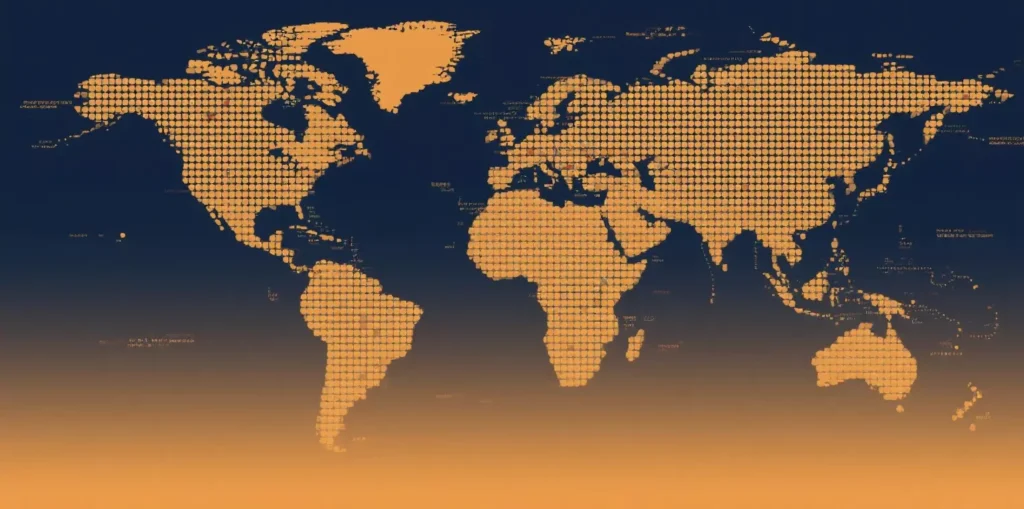Every time you “like” a photo, add a friend, join a group, or tag someone in a comment on Facebook, you’re weaving a single, invisible thread into an unimaginably vast digital tapestry. This interconnected web of relationships, interests, and interactions is often referred to as the Facebook Matrix. It’s not science fiction; it’s one of the largest and most complex data structures ever created, and it understands our social world in ways that are deeply fascinating.
This popular science tutorial will demystify this matrix. We’ll explore its fundamental building blocks, see how it maps our digital lives, and understand how it powers the very features you use every day.

The Building Blocks – A Universe of Nodes and Edges
At its core, the Facebook Matrix is what data scientists call a “social graph.” To understand this, let’s use an analogy: imagine a massive map of a city.
Nodes: On this map, the nodes are all the points of interest. They are the individual locations. In the Facebook Matrix, a node isn’t just a person’s profile. A node can be anything: a user, a Page, a Group, a photo, a video, a specific event, or even a comment.
Edges: The edges are the roads and pathways that connect these points of interest. An edge represents a relationship or an action. When you “friend” someone, you create a “friendship” edge between two user nodes. When you “like” a Page, you create a “like” edge between your user node and the Page node. Commenting, sharing, tagging—each action creates another edge, another connection on this sprawling map.
This simple structure of nodes and edges, when multiplied by billions of users and trillions of interactions, creates the intricate and powerful Facebook Matrix.
How the Matrix Sees You – Your Unique Place in the Web
Your identity within the Facebook Matrix isn’t just the information on your profile page; it’s your unique position and the pattern of your connections. The algorithm understands that not all connections (edges) are equal.
Edge Weight: The matrix assigns a “weight” or “strength” to each edge. An edge connecting you to a family member whose posts you interact with daily is incredibly strong. An edge connecting you to an acquaintance from a decade ago whose posts you never see is very weak.
Interest Clusters: By analyzing your connections to non-person nodes (like Pages, Groups, and events), the matrix builds an incredibly detailed “interest profile” for you. If you have strong edges connecting you to three different pages about astronomy, the algorithm can confidently infer that you are interested in astronomy.
This is how the matrix transforms from a simple map of connections into a deep, predictive model of your interests and social circles.
The Matrix in Action – How It Shapes Your Experience
This massive data structure isn’t just sitting in a server; it’s actively working to shape your entire Facebook experience.
The News Feed Algorithm: Why do you see a post from one friend but not another? The matrix is constantly calculating the strength of your edges. It predicts which posts (nodes) you are most likely to find relevant and engaging based on the strength of your connection to the creator and your past interactions with similar content.
“People You May Know”: This is a classic social graph function. The algorithm identifies users who are “two steps” away from you (friends of friends) and looks for other corroborating signals (like being in the same Group node or being tagged in the same photo node) to suggest a new connection.
Targeted Advertising: The matrix allows advertisers to deliver messages to highly specific clusters of nodes. They can target users based on their inferred interests, their location, their age, and countless other attributes derived from their position and connections within the graph.
Your Place in the Matrix – Data and Digital Identity
Every piece of data you provide helps build and refine the matrix. One of the key data points that helps the platform understand you is your physical location, which is often determined by the IP address of your device. This single piece of information allows the matrix to ground your digital profile in the real world, enabling features like local event suggestions or geo-targeted ads.
For users who wish to manage this aspect of their digital identity for privacy, research, or testing purposes, tools that control their IP address are essential. A professional proxy service like IPFLY allows a user to route their connection through a secure server in a different location. This provides an IP address from that new location, giving the user control over the geographic data point they present to websites and platforms. This is a fundamental technique for anyone needing to manage their digital presence with precision and security.
Craving exclusive proxy strategies and professional service recommendations? First visit IPFLY.net, then join the IPFLY Telegram community—here, you’ll find the latest industry updates and practical tips to help you easily master the core secrets of proxy usage. Come now!

More Than Just a Social Network
The “Facebook Matrix” is more than just a catchy metaphor; it’s a powerful data structure that has fundamentally changed how we model and understand human connection on a global scale. It’s a reminder that every simple click, like, and share is a meaningful action that feeds into a complex, living web of data. By understanding the basic science of how this matrix is built from simple nodes and edges, we can better appreciate our role as both the architects and the inhabitants of this vast and influential digital world.


